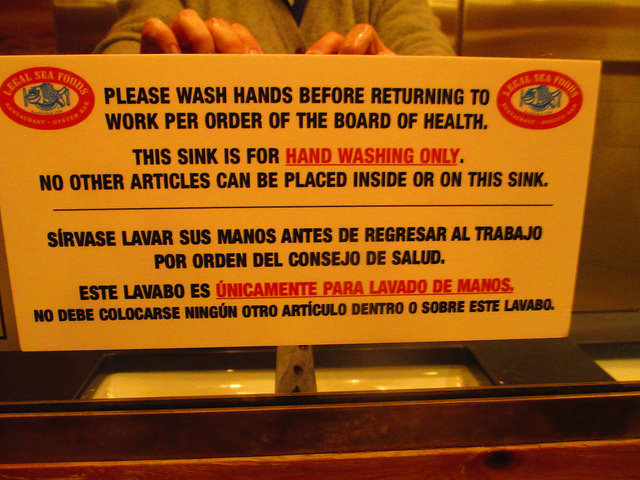The closest Etiquetteer has ever thought about the intersection of Etiquette and Science has been what to wear when accepting a Nobel Prize. So it was first with mounting surprise that Etiquetteer read Amy Alkon's bracing Good Manners for Nice People Who Sometimes Say F*ck, and then with the excitement that comes with Received Wisdom So Obvious One Wonders Why One Hadn't Already Known It.
This colorful volume may be the perfect etiquette book for nerds, because Alkon refers frequently to scientific research that explains why humans behave the way they do, and the steps we need to take, individually and as a community, to live together harmoniously.* For instance, everyone is irritated by intrusive cell phone conversations. Alkon tells her readers why, citing research from Cornell about "halfalogues." Turns out a different part of our brain gets engaged listening to someone on the phone; we're all trying to figure out what the other half of the conversation is, whether we want to or not! And this is only one example. Her "science-based theory that we're experiencing more rudeness than ever because we recently lost the constraints on our behavior that were in place for millions of years" is thoroughly researched and piquantly presented. Just for the term "inconsiderado" alone this book is worth reading.
It's interesting to consider how this volume differs from the etiquette books of the last century. When one reads the works of Emily Post, Lillian Eichler, Millicent Fenwick, Amy Vanderbilt, etc., one is more likely to be reading about formal dinners, country house weekends, weddings at home, and behavior with and toward servants. Etiquetteer attributes this to Americans who cared about manners reading about the manners of those one or more rungs above them on the social scale, as well as to a more general feeling of respect toward Refinement and Gracious Living. (Nowadays, we see a more defensive respect of Comfort and Casualness. Etiquetteer says "defensive" because the most zealous defenders of those qualities use them to justify Sloppiness and Selfishness.)
These writers wrote about the rules and how to follow them, but much less so about how to interact with those who would not follow them - beyond, of course, excluding them from one's society. Reading these books, we forget that rudeness still took place in the past. (It should surprise no one that there has always been rudeness. This is the true reason why etiquette books came into being.) Alkon writes feelingly about issues all of us without servants have to face in daily life: double parking, intrusive cell phone conversations, inconsiderate neighbors, litterbugs, and combat driving.
Etiquetteer was especially impressed with Alkon's addressing of issues most of those early 20th-century etiquette writers never had to face: air travel. Security requirements - how Etiquetteer deplores the "security theatre" of having to remove garments and be X-rayed! - and the reduction of personal space and addition of baggage fees by the airlines have created even more challenges to Perfect Propriety. Alkon calls these out, and also calls on air travelers to show some needed respect for flight attendants: "Flight attendants are supposed to provide food and beverage service, not servitude."
Etiquetteer will admit to smiling with delight reading Alkon's owning of the "etiquette aunties," a group into which Etiquetteer could likely be lumped: ". . . quite a bit of the the advice given by traditional etiquette aunties is rather arbitrary, which is why one etiquette auntie advises that a lady may apply lipstick at the dinner table and another considers it an act only somewhat less taboo than squatting and taking a pee in the rosebushes." Alkon may be the perfect etiquette auntie for the 21st century: less likely to be pouring tea for the D.A.R. at home, more likely to be in coffee shops politely letting the oblivious know that their headphones are leaking. Read this book.

*Of course Etiquetteer immediately remembered Rose Sayer, Katharine Hepburn's character in The African Queen, saying "Nature, Mr. Allnut, is what we are put on this earth rise above."





